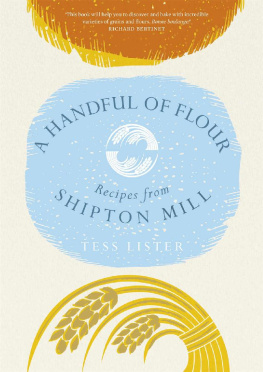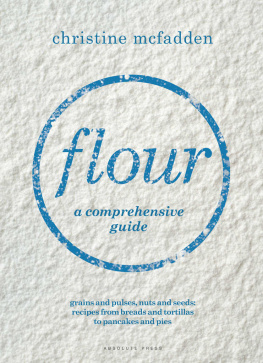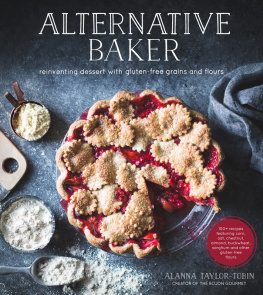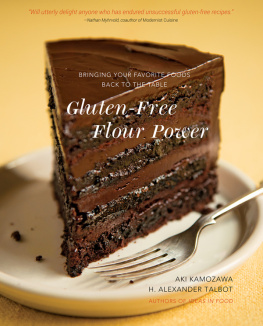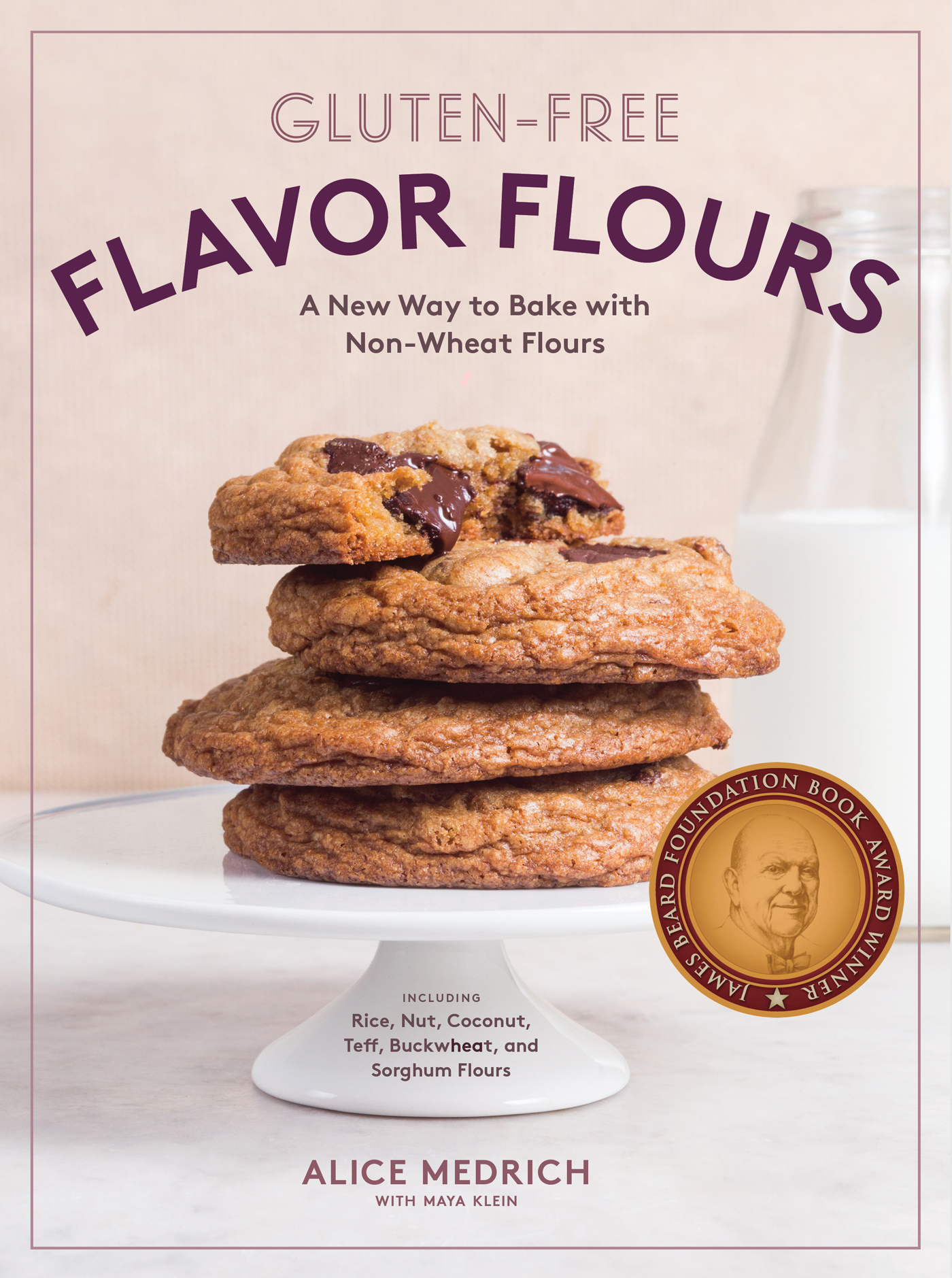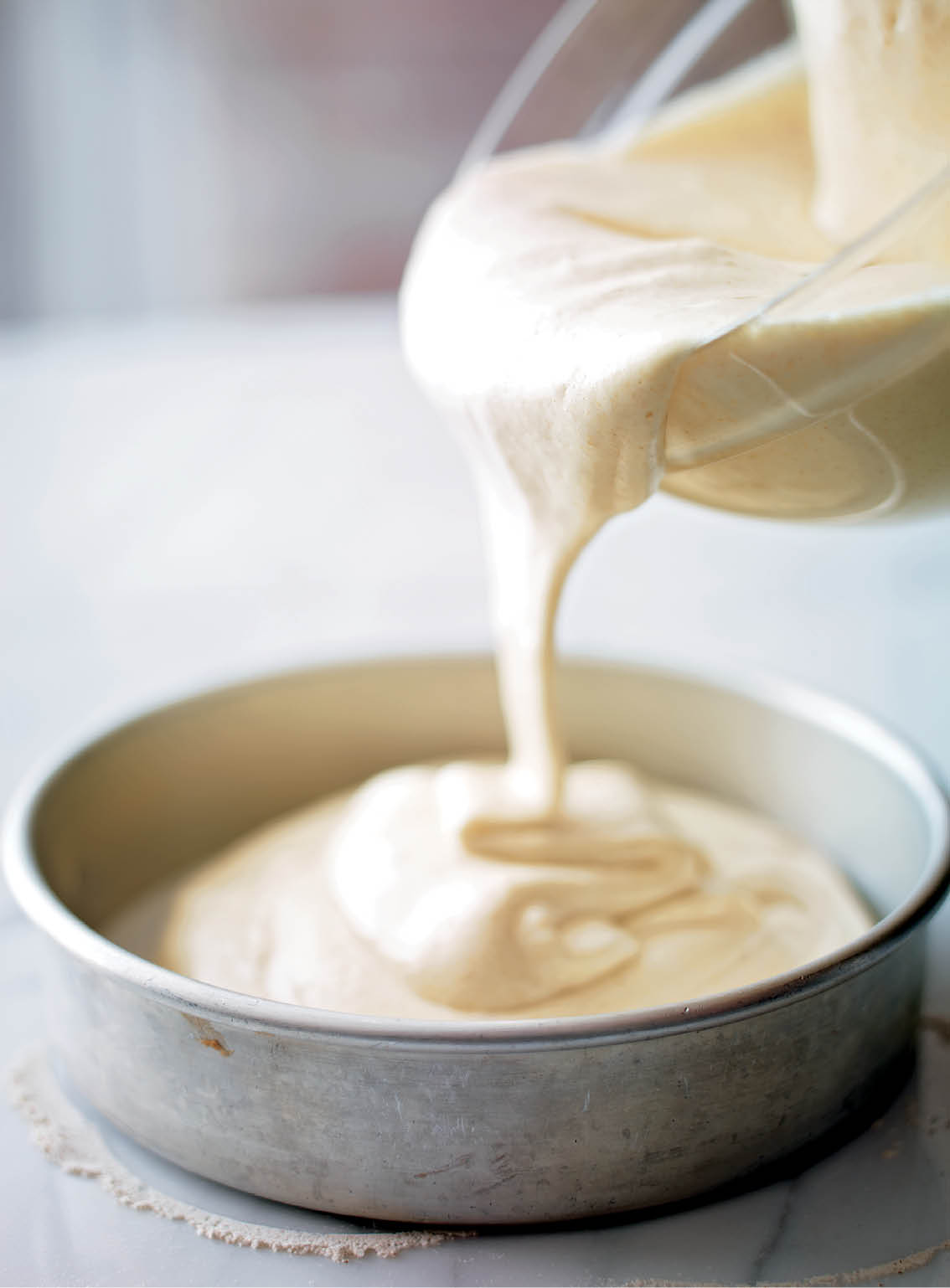A New Way to Bake with Non-Wheat Flours, Including Rice, Nut, Coconut, Teff, Buckwheat, and Sorghum Flours

New York
To our children
Lucy Medrich
Nate Klein
Wade Klein
Contents
Introduction
If you are an avid cook or baker, or someone who tinkers in the kitchen for fun, you probably walk the aisles of the best supermarkets and haunt specialty food shops for new and interesting ingredients to taste and experiment with. Youve no doubt noticed the rainbow of so-called alternative flours a few steps from the regular flour in the baking aisle. Oat flour, brown rice flour, corn flour, buckwheat flour... Maybe youve tried some of them. Or maybe you still walk by, but wonder what to do with them. I stopped passing them by and started experimenting with a few of the most flavorful of these gorgeous flours several years ago for my book Pure Dessert. My strategy then was to replace a portion of the wheat flour in a recipe with a new flour to create a more interesting and flavorful cake or cookie. In essence, I treated the new flours like flavor ingredients that also happened to have some of the bulky and absorbent characteristics of the flour (wheat) that we are most familiar with. The results were variously delicate, interesting, elegant, and decadentall things desserts should bebut they also made me smile to know that whole grains could be added to desserts because they tasted good rather than because they were healthy! Two birds with one stone, I thought, and also, Im not done here.
Pure Dessert was just the beginning. Flavorful flours in the baking aisle continued to beckon, and there are even more of them now (thanks to the growing number of gluten-free eaters who have brought attention to them). Now everyone can find these flours in better supermarkets across the country, as well as online. Meanwhile, people who love food are more interested and open to the idea of flours that taste and feel different from the all-purpose wheat flour standard. After a terrific response to the wheat-free cookies in my book Chewy Gooey Crispy Crunchy Melt-in-Your-Mouth Cookies, I was excited about working more with flavor flours, treating them as hero ingredients (not just substitutions), and challenged by the idea of using them exclusivelythat is, without any wheat flour for support.
Flavor Flours is a collection of recipes that feature flours made of rice, oats, corn, sorghum, teff, buckwheat, coconut, and chestnuts and other nuts. I chose these flours because each has a very distinct flavora voice, reallyeven white rice, though it can also work as a neutral backdrop for other flours and other ingredients. With the arguable exception of white rice flour, flours that are essentially pure starch are not included, partly because they arent that delicious and dont have much flavor, and partly because I love bringing more whole grains into baking, especially into decadent and indulgent desserts, where they are still unexpected. Conveniently for those with wheat issues, Ive chosen only flours that are gluten free.
Rice, oats, and corn (and to a limited extent, buckwheat) are familiar to us as a side dish, a bowl of porridge or groats, or a hearty bread. But once these familiar grains are transformed into flours, they can be used in baked goods that have entirely different textures. In the 1970s chefs started serving vegetable purees, many of which were hard to identify. Why? Aside from the fact that tons of butter or cream was added to them, we no longer had a familiar texture for reference. We had to pay attention. Suddenly, we tasted flavors that wed never noticed before. Tasting familiar grains in new forms likewise reveals unexpected flavors. Grains like brown rice and oats have a known pedigree that connects them to health food, hearty bread, and granola, so I was startled at the delicate textures and aromas I found in the simplest cakes made from their flours. I never dreamed that a plain oat flour sponge cake would taste like butterscotch, or that a brown rice sponge could have such a moist and delicate butter flavor, or that buckwheat would have notes of honey and rose.
Teff and sorghum are consumed around the world, but rarely by Americans, so I had no experience baking with them but plenty of excitement about exploring the possibilities. Rather than use them as they are used indigenously, I treat them like new ingredients in familiar rather than ethnic baking. Teff is earthy and sometimes tastes very much like whole wheat but without the bitterness of whole wheat. Sorghum has flavors reminiscent of oats and corn, yet is somehow different. Chestnuts are most familiar as a wintertime treat, roasted and sold on street corners, or used in traditional turkey stuffing. The flour produced from dried chestnuts is soft and sweet, a wonderful and inspiring baking ingredient. Rice flour has its own distinct flavor and can be used by itself, but it also works as a neutral backdrop for other ingredients.
Nuts and coconut are common in Western baking; every good bakers notebook includes a variety of European nut torten made with ground nuts or nut mealnow often called nut flour. Used as the major ingredient in recipes without any other flour or as a partner to other flavor flours, nut flours make sensational cakes, cookies, and more. Coconut, once a polarizing ingredient (people either loved it or hated it), is now very much in vogue. The easy availability of coconut flour and dried coconutnot just the old supersweet shredsmakes coconut a more versatile and compelling ingredient than ever. I have always loved coconut and now have a reason to include it as a major ingredient rather than just a flavor accessory, and an excuse for so many coconut cookies in one book!
Flavor Flours is organized by flour; each chapter includes recipes that call for that flour alone, as well as recipes with a partner flour that supports it. In conventional gluten-free recipes, specialty flours like those used here are mixed with other flours and starches to create an all-purpose neutral blend that can be used as a substitute for wheat flour in everyday baking. Ive taken a different, more ingredient-driven approach here, by letting each flour star in a variety of delicious and surprising recipesas though wheat never existed! Blends of several flours are rare and are used expressly to build bold and complex flavor profiles (as is the case in three sensational savory crackers), rather than to create a neutral background. Since the goal of this book is to celebrate the flavor of the flours, each one is treated as a hero, or important feature of the recipe; I do not use an all-purpose flour blend.
Most of the recipes are for beloved familiar desserts and other baked goods: brownies and chocolate cakes, biscuits and quick breads, cookies and doughnuts. In each recipe, the flour is used for its own flavor and sometimes also to enhance the ensemble of flavors in the recipe. Flours with nutty flavors like teff and buckwheat add complexity and complementary flavor to a nutty fruitcake. Brownies made with rice flour taste more chocolaty than regular brownies because the rice flour seems to amplify the flavor of the chocolate! The same is true of chocolate souffls and many other desserts. Brownies made with teff flour get an added nuance of cocoa flavor from the teff. The deep, earthy flavor of buckwheat is such a natural in Panforte Nero (see ) drizzled with honey could be so delicate and floral by contrast. A classic Swiss tart filled with honey and walnuts gets bonus flavor from a chestnut flour crust, as does a ricotta cheesecake; chestnut gnoise is good enough to nibble with your coffee all by itself, and even better with crme frache and spiced pear or apple butter.



